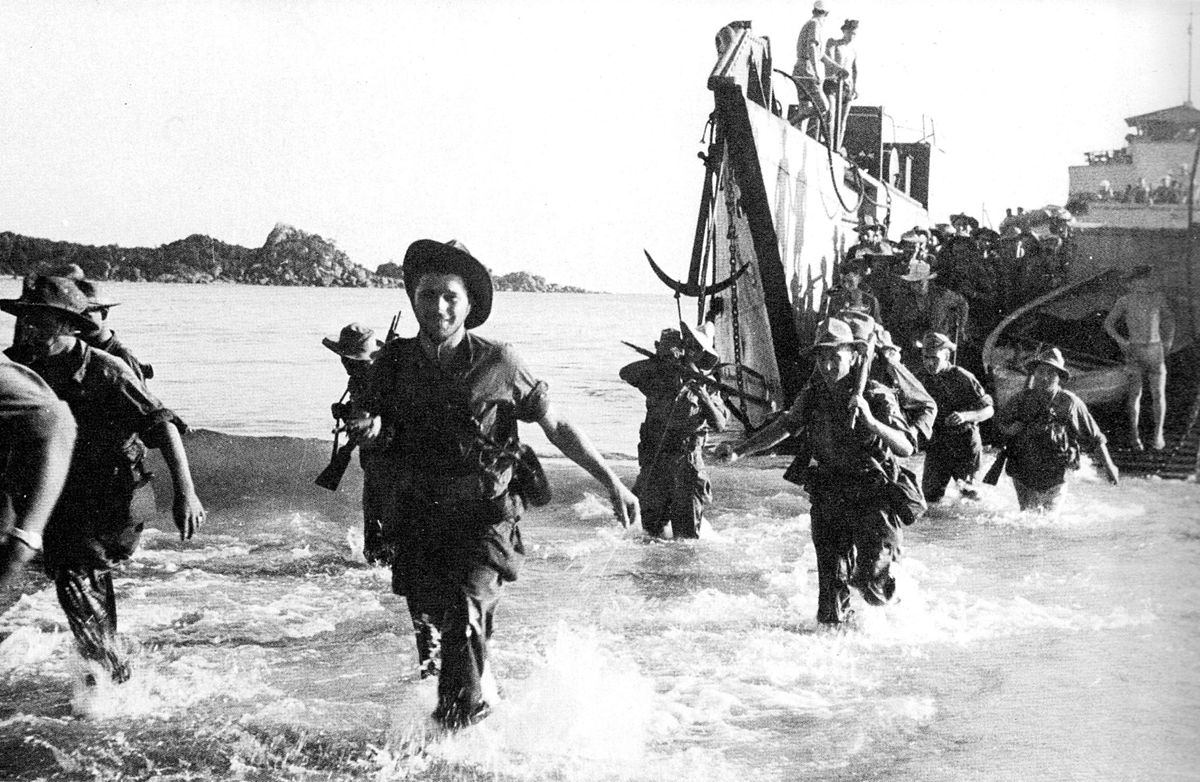
First Indochina War
VietnamThe First Indochina War began in French Indochina on December 19, 1946, and lasted until July 20, 1954. Fighting between French forces and their Việt Minh opponents in the south dated from September 1945. The conflict pitted a range of forces, including the French Union's French Far East Expeditionary Corps, led by the government of France and supported by the former emperor Bảo Đại's Vietnamese National Army against the People's Army of Vietnam and Việt Minh (part of the Communist Party), led by Võ Nguyên Giáp and Hồ Chí Minh. Most of the fighting took place in Tonkin in northern Vietnam, although the conflict engulfed the entire country and also extended into the neighboring French Indochina protectorates of Laos and Cambodia.
The first few years of the war involved a low-level rural insurgency against the French. In 1949 the conflict turned into a conventional war between two armies equipped with modern weapons supplied by the United States, China and the Soviet Union. French Union forces included colonial troops from their colonial empire - Moroccan, Algerian, and Tunisian Arabs/Berbers; Laotian, Cambodian and Vietnamese ethnic minorities; Black Africans - and French professional troops, European volunteers, and units of the Foreign Legion. The use of metropolitan recruits was forbidden by the government to prevent the war from becoming even more unpopular at home. It was called the "dirty war" (la sale guerre) by leftists in France.
The strategy of pushing the Việt Minh into attacking well-defended bases in remote parts of the country at the end of their logistical trails was validated at the Battle of Nà Sản even though the base was relatively weak because of a lack of concrete and steel. French efforts were made more difficult due to the limited usefulness of armored tanks in a jungle environment, lack of strong air forces for air cover and carpet bombing, and use of foreign recruits from other French colonies (mainly from Algeria, Morocco and even Vietnam). Võ Nguyên Giáp, however, used efficient and novel tactics of direct fire artillery, convoy ambushes and massed anti-aircraft guns to impede land and air supply deliveries together with a strategy based on recruiting a sizable regular army facilitated by wide popular support, a guerrilla warfare doctrine and instruction developed in China, and the use of simple and reliable war material provided by the Soviet Union. This combination proved fatal for the bases' defenses, culminating in a decisive French defeat at the Battle of Dien Bien Phu.
An estimated 400,000 to 842,707 soldiers died during the war as well as between 125,000 and 400,000 civilians. Both sides have committed war crimes during the conflict, including killings of civilians (such as the Mỹ Trạch massacre by French troops), rape and torture. At the International Geneva Conference on July 21, 1954, the new socialist French government and the Việt Minh made an agreement which effectively gave the Việt Minh control of North Vietnam above the 17th parallel. The south continued under Bảo Đại. The agreement was denounced by the State of Vietnam and by the United States. A year later, Bảo Đại would be deposed by his prime minister, Ngô Đình Diệm, creating the Republic of Vietnam (South Vietnam). Soon an insurgency, backed by the north, developed against Diệm's government. The conflict gradually escalated into the Vietnam War (1955–1975).
